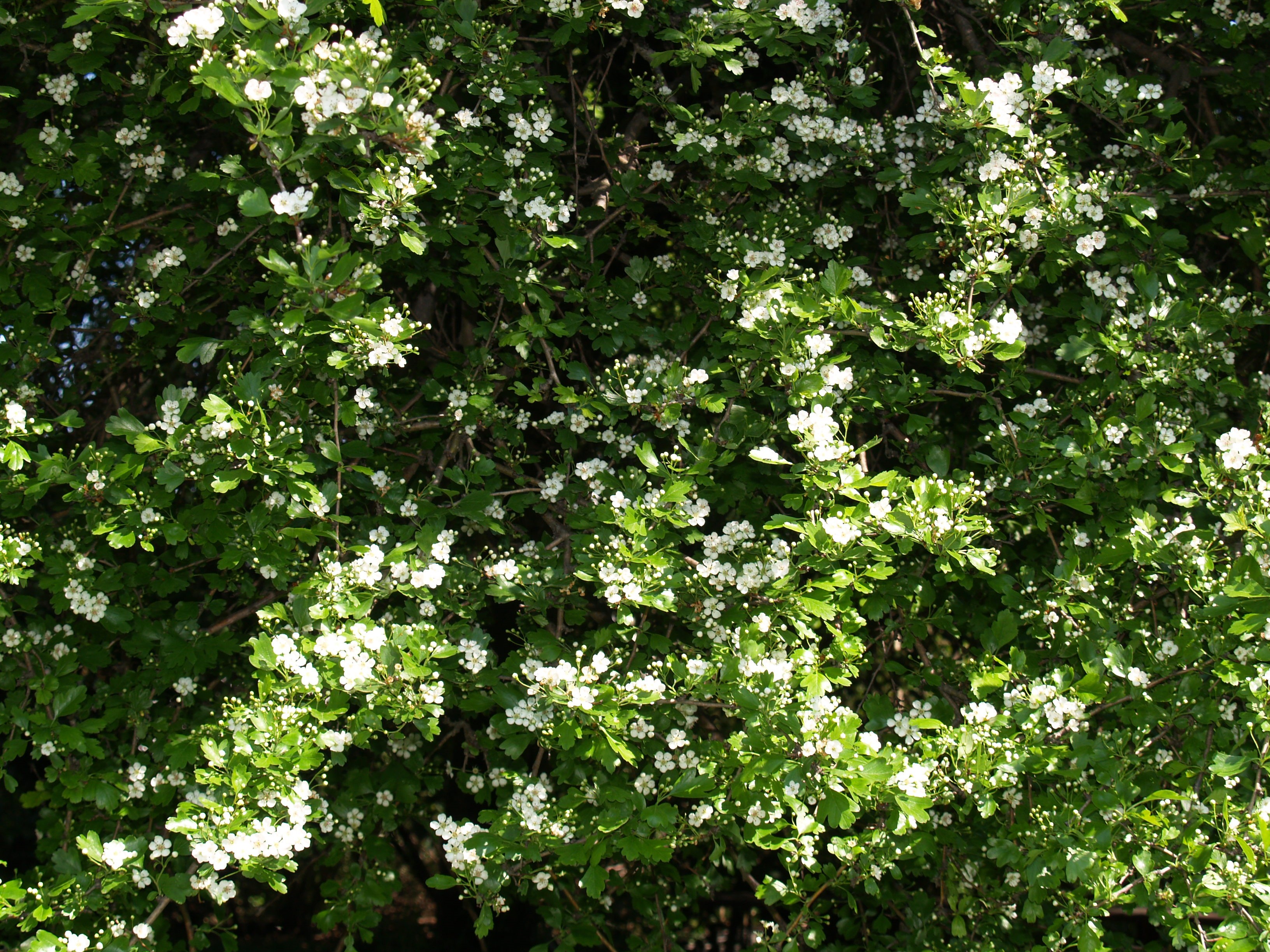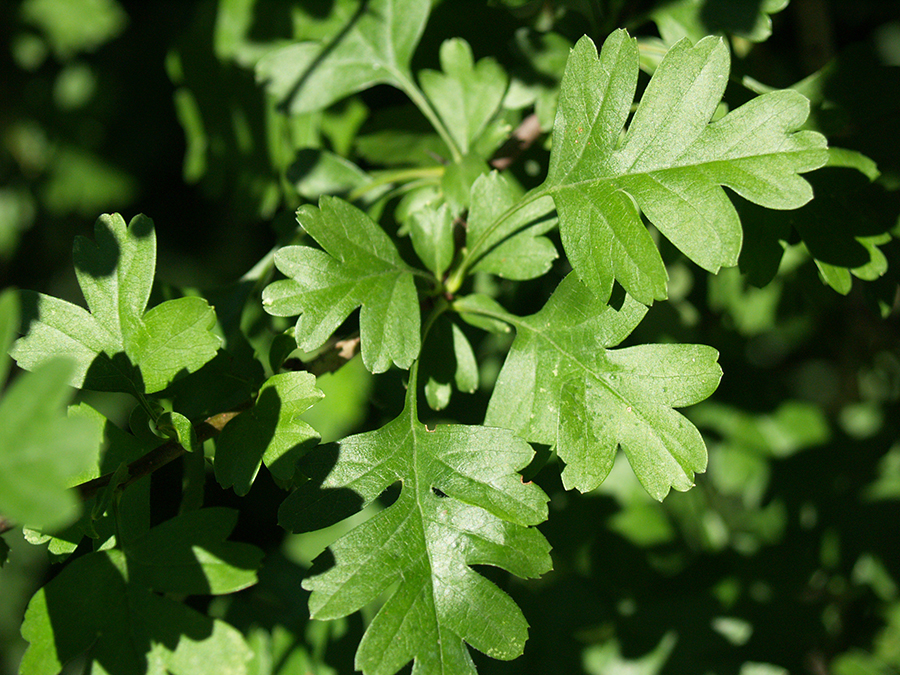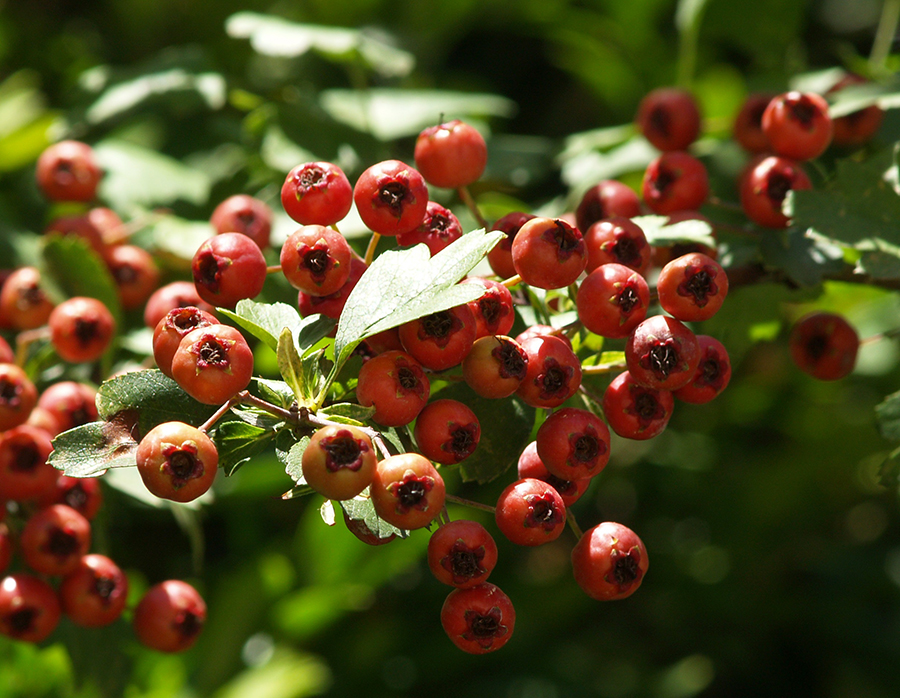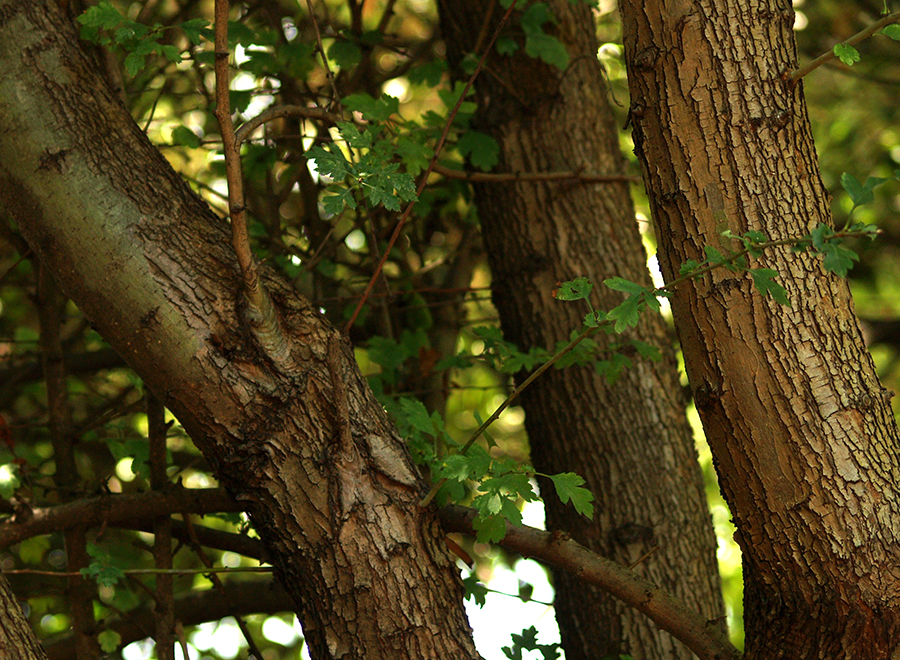
Common Hawthorn
Crataegus monogyna
Family and description
From the Rosaceae family, the hawthorn is a deciduous shrub that can reach a height of up to 10 m.
Its trunk is smooth, greyish-brown and darkens with age. The branches are reddish-purple or reddish-brown, with straight spines of 2 to 4 cm that grow on the stalk.
The leaves are simple, alternate, with 3 to 5 margin lobes and bright green in colour.
With intense flowering from February to May, the five-petal flowers, white and odoriferous, appear grouped in corymbs. The stamens are purple in colour.
The fruits are red, berry-like, of 6 to 10 mm in diameter, crowned by remains of sepals. The haws appear in July and remain until October.
Origin and habitat
This plant originates from the temperate and cold regions of Europe and Asia. In the Iberian Peninsula it is a very abundant species. It usually occurs on the edges of deciduous or mixed forests, including riparian galleries and may also occur spontaneously in oak forests, on stony hills and on the sides of paths.
Uses and curiosities
It is a plant of high medicinal value, much used traditionally in the therapy of cardiac diseases. Dried leaves and flowers are infused or extracted and used to treat diseases of the circulatory system and their fruits, mixed with gooseberry, are used in the preparation of syrups. Its wood produces good charcoal.


